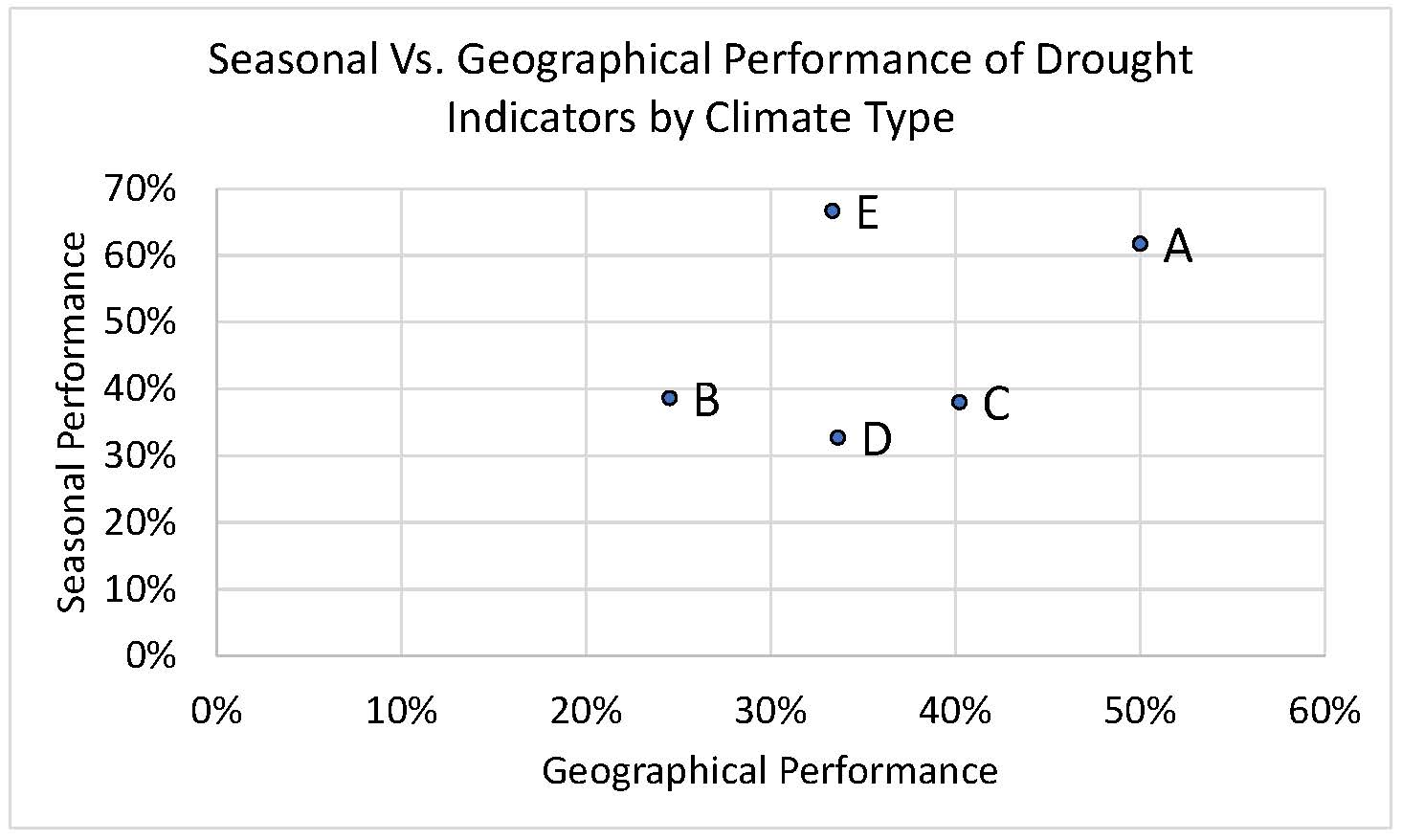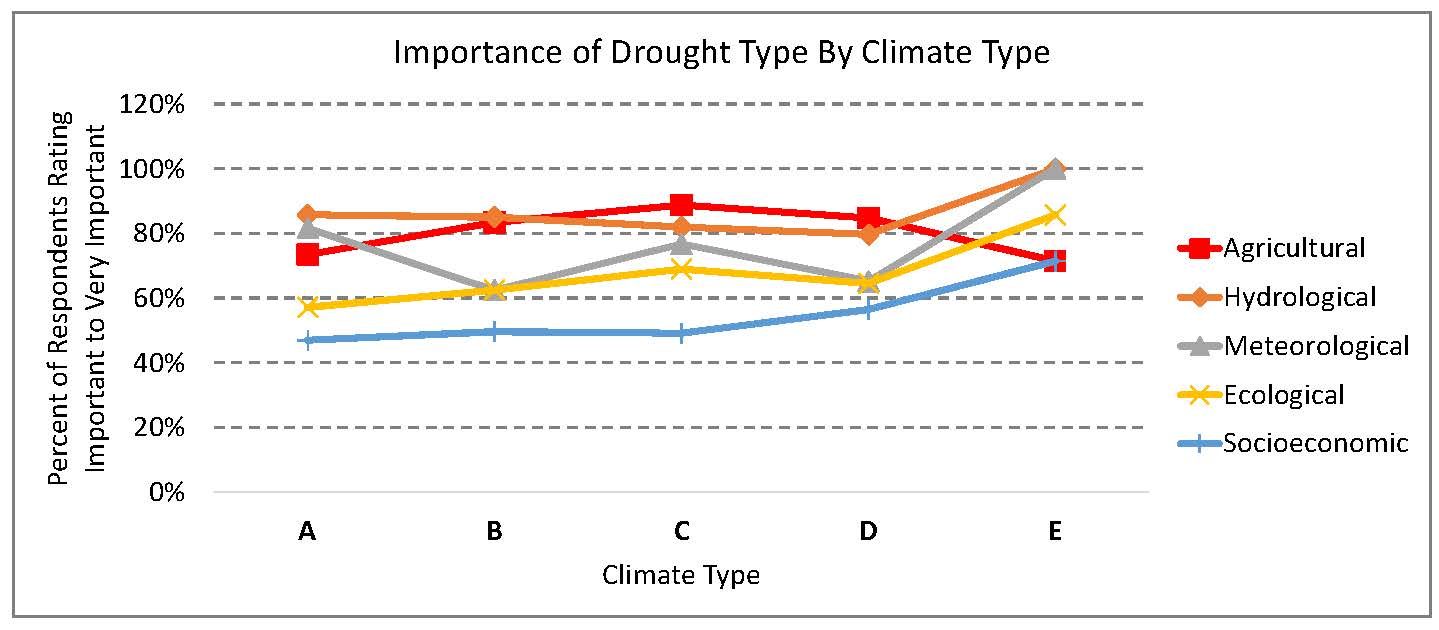User Perceptions of Drought Indices in North American Climates
[ad_1]
Drought monitoring and early detection have improved greatly in recent decades through the development and refinement of numerous indices and indicators. However, there is a lack of user-informed guidance as to which drought monitoring tools are most appropriate in a given location.
A newly released review paper by NCEI, NOAA, NIDIS, and other federal, state, and academic partner scientists across North America aims to fill this gap. The study summarizes the results of targeted user engagement assessments and peer-reviewed literature to improve the understanding of drought across North America and to enhance the utility of drought-monitoring tools. In this international collaboration, workshops and surveys over the past two decades were used to assess and make general conclusions about the perceived performance of drought indicators, indices, and impact information used for monitoring drought in the five main Köppen climate types (Tropical, Temperate, Continental, Polar Tundra, Dry) found across Canada, Mexico, and the United States. The peer-reviewed literature included scientific journal articles that objectively evaluated the effectiveness of drought indices and indicators in the various climate types.
New Context for Drought Indicators and Indices
Previous work (notably the World Meteorological Organization’s Handbook of Drought Indicators and Indices) listed several dozen drought indices and indicators that are available for monitoring drought worldwide, but provided no guidance on which are the best indicators to use. This new publication provides additional information that supplements the WMO’s Handbook and similar compilations by serving as a guidebook or “toolbox” to help users select which drought indices and indicators are most appropriate to monitor drought in the diverse climates of North America. It also recommends ways to strengthen the use of indices and indicators in drought decision-making.
This paper also explores the use of drought indices in Arctic climates, a subject that has received limited attention for many years. It also contains a section that discusses the effects of climate change on the use and viability of drought indices.
Building on the Commission for Environmental Cooperation
The paper supplements the survey results from the 2019-2020 collaborative study funded and managed by the North America Commission for Environmental Cooperation (CEC). Results are presented in new graphical forms to aid users in visualizing, understanding, and using the indicators and indices. The paper also has linkages to the 2021 Commission for Environmental Cooperation paper and the NCEI web page of CEC study results, summarizing and building on previous research on North American drought indicators and indices.
Key Study Findings
In Tropical, humid Temperate, and southerly Continental climates, droughts are perceived by users to be more short-term (less than 6 months) in duration rather than long-term (more than 6 months). In Polar Tundra climates, Dry climates, Temperate climates with dry warm seasons, and northerly Continental climates, users perceive droughts to be more long-term. In general, agricultural and hydrological droughts were considered to be the most important drought types. Drought impacts related to agriculture, water supply, ecosystem, and human health were rated to be of greatest importance.
Users identified the most effective indices and indicators for monitoring drought across North America to be:
- U.S. Drought Monitor (USDM) and Standardized Precipitation Index (SPI) or another measure of precipitation anomaly
- Normalized Difference Vegetation Index (NDVI) or another satellite-observed vegetation index
- Temperature anomalies
- Crop status
- Soil moisture
- Streamflow
- Reservoir storage
- Water use (demand)
- Reported drought impacts
Users also noted the importance of indices that measure evapotranspiration, evaporative demand, and snow water content.
Drought indices and indicators were generally thought to perform equally well across seasons in Tropical and colder Continental climates, but their performance was perceived to vary seasonally in Dry, Temperate, Polar Tundra, and warmer Continental climates, with improved performance during warm and wet times of the year.
The drought indices and indicators, in general, were not perceived to perform equally well across varying geographies. This review paper provides guidance on when (time of year) and where (climate zone) the more popular drought indices and indicators should be used.

The paper concludes by noting the importance of understanding how drought, its impacts, and its indicators are changing over time as the climate warms and by recommending ways to strengthen the use of indices and indicators in drought decision-making.
[ad_2]


